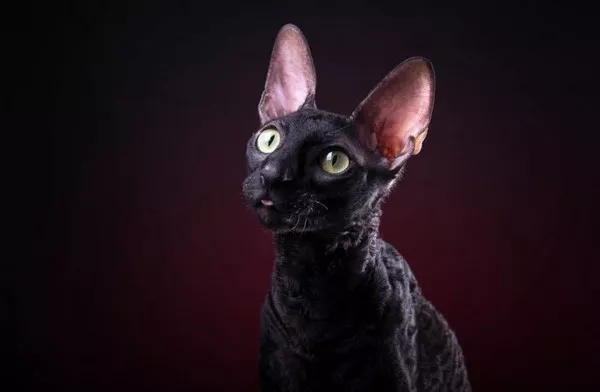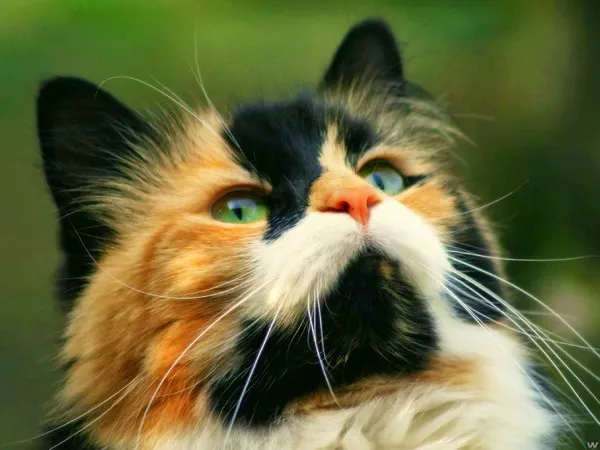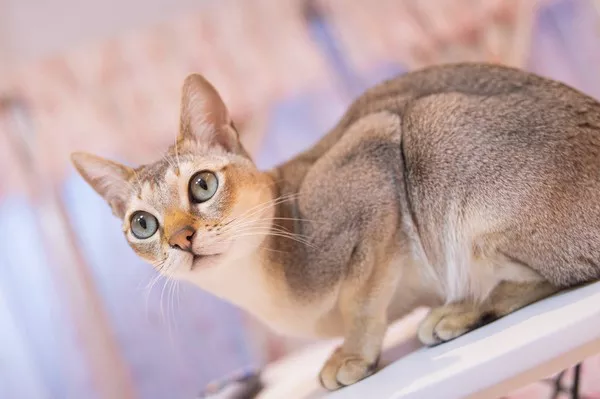The Cornish Rex cat is renowned for its distinctive appearance, characterized by its sleek, wavy coat, large ears, and slender body. Despite its unique appearance, there are often misconceptions about the Cornish Rex’s coat length. In this article, we aim to dispel the myths surrounding the Cornish Rex’s coat and provide a comprehensive understanding of this fascinating breed’s unique characteristics.
Unraveling the Cornish Rex Coat
1. The Genetics of Coat Length
Understanding the genetics behind the Cornish Rex’s coat is essential to dispelling myths about its length. Unlike traditional cat breeds, which have a double coat consisting of both guard hairs and an insulating undercoat, the Cornish Rex has a single coat of soft, downy fur. This unique coat is the result of a genetic mutation that affects the structure of the hair follicles, causing them to be short, curly, and lacking in guard hairs.
2. The Myth of Long Hair
One of the most common misconceptions about the Cornish Rex is that it has long hair. This misconception likely stems from the fact that the Cornish Rex’s coat is longer than that of other Rex breeds, such as the Devon Rex. However, compared to traditional long-haired breeds like the Maine Coon or Persian, the Cornish Rex’s coat is relatively short and fine.
3. Clarifying the Length of the Cornish Rex Coat
To clarify, the Cornish Rex does not have long hair in the traditional sense. While its coat may appear longer than that of other Rex breeds, it is still considered short-haired by breed standards. The Cornish Rex’s coat is characterized by its soft, silky texture and distinctive wavy or rippled appearance, rather than by its length.
Understanding the Cornish Rex Breed
1. Origins and History
The Cornish Rex breed originated in Cornwall, England, in the 1950s, when a kitten with a curly coat was born to a domestic cat. Breeders recognized the unique qualities of the kitten’s coat and began selectively breeding for the trait, eventually establishing the Cornish Rex breed. Today, the Cornish Rex is recognized by cat registries worldwide and is cherished for its elegant appearance and affectionate nature.
2. Physical Characteristics
In addition to its distinctive coat, the Cornish Rex is known for its slender, athletic build, large ears, and almond-shaped eyes. It has a graceful and elegant appearance, with a long, tapering tail and a distinctive head shape. Despite its slender appearance, the Cornish Rex is surprisingly muscular and agile, with a playful and curious personality.
3. Temperament and Personality
Cornish Rex cats are beloved for their affectionate and sociable nature. They are highly intelligent and curious, with a penchant for exploring their surroundings and interacting with their human companions. Cornish Rex cats form strong bonds with their owners and enjoy being involved in all aspects of family life, from lounging on the couch to participating in playtime activities.
Caring for Your Cornish Rex’s Coat
1. Regular Grooming Routine
Despite their short coat, Cornish Rex cats require regular grooming to keep their fur looking its best. While they may not shed as much as long-haired breeds, they still benefit from weekly brushing to remove loose hair, dirt, and debris. Use a soft-bristled brush or grooming mitt to gently groom your Cornish Rex’s coat, taking care to avoid tugging or pulling on their sensitive skin.
2. Bathing and Hygiene
Cornish Rex cats are known for their love of water and may enjoy the occasional bath to keep their coat clean and shiny. Use a mild cat shampoo and warm water to bathe your Cornish Rex, taking care to rinse thoroughly to remove any soap residue. After bathing, gently towel dry your cat and allow them to air dry naturally or use a hair dryer on a low setting.
3. Skin Care and Protection
Because of their short, fine coat, Cornish Rex cats may be more prone to skin sensitivity and sunburn than other breeds. Protect your Cornish Rex’s skin by keeping them indoors during peak sun hours and applying pet-safe sunscreen to exposed areas, such as the ears and nose, if they will be spending time outdoors. Additionally, monitor your cat’s skin for any signs of irritation or dermatitis and consult your veterinarian if you have any concerns.
Conclusion: Appreciating the Unique Qualities of the Cornish Rex
In conclusion, the Cornish Rex is a unique and elegant breed known for its distinctive coat and affectionate personality. While misconceptions about the length of its fur may persist, it’s essential to understand that the Cornish Rex’s coat is short and fine, with a soft, silky texture and a wavy or rippled appearance. By embracing the unique qualities of the Cornish Rex and providing proper care and grooming, you can ensure that your furry friend remains healthy, happy, and looking its best.
FAQs:
1. What kind of hair does a Cornish Rex cat have?
A Cornish Rex cat has a unique type of hair called “Rex” or “down.” This hair is short, curly, and extremely soft to the touch, resembling the texture of lamb’s wool. Unlike other cats, Cornish Rex cats lack the typical guard hairs and instead have only the soft undercoat, giving them their distinctive curly appearance.
2. What type of coat does a Cornish Rex cat have?
The Cornish Rex cat has a coat characterized by its short, wavy, and curly fur. This coat lacks the longer guard hairs that most cats possess, resulting in a plush and velvety texture. The coat’s unique structure contributes to the Cornish Rex’s elegant and striking appearance.
3. How do you describe a Cornish Rex?
A Cornish Rex cat is typically described as slender, lithe, and graceful, with a distinctive head shape featuring high cheekbones, large ears, and almond-shaped eyes. Its most notable feature is its curly coat, which gives it a soft and plush appearance. Cornish Rex cats are known for their playful and affectionate personalities, making them delightful companions for those who appreciate their unique looks and lively demeanor.


























